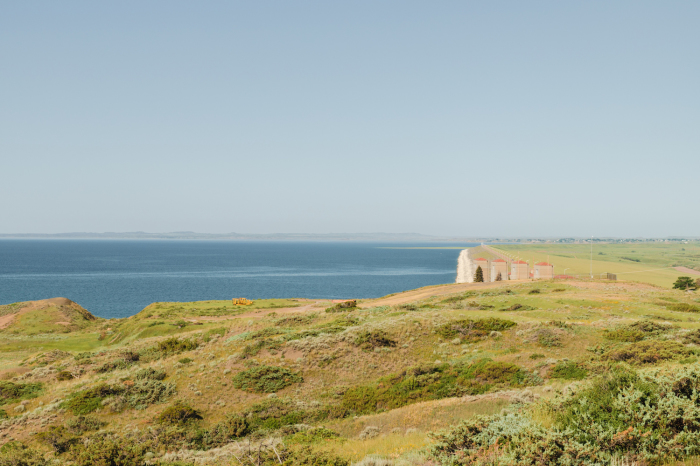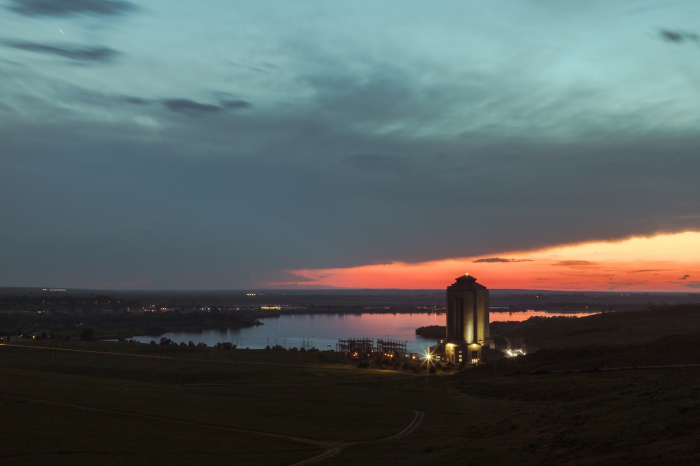Travel: Postcard from the middle of nowhere

This has to be Montana’s best-kept secret.
I’m in Fort Peck, a tiny community that owes its existence to the Army Corps of Engineers and a reservoir or man-made lake of the same name, in northeastern Montana.
Despite its name, there was never actually a fort here. What was called a fort was instead a small trading post along the banks of the mighty Missouri River. That location, a couple miles from the present-day community, has been covered by water since one of F.D.R.’s New Deal projects built the massive earth-filled dam that created Fort Peck Lake.
At 134 miles long and covering 245,000 acres, this is the country’s fifth-largest man-made lake. For perspective, the 1,520 miles of shoreline is actually longer than the entire coast of California.
Surprisingly, there are no real hotels. Fishermen and boaters bragged to me about having entire swaths of the lake to themselves.
I chalk it up to the location or lack of one.
Fort Peck is truly in the middle of nowhere — the most isolated part of the contiguous United States. That’s not an exaggeration or rhetorical flourish. Consider this: the closest Walmart is at least 140 miles away in North Dakota. You really have to go out of your way to get here. This keeps many visitors away.
The Fort Peck Interpretive Center, which must be one of the few museums operated by the U.S. Fish and Wildlife Service, punches above its weight. The well-curated exhibits cover just about everything, including the expedition of Meriwether Lewis and William Clark in the aftermath of the Louisiana Purchase.

Of course, much of the focus is the project that built the dam, which provides hydroelectric power, improved river navigability and flood control for everything downstream of here. The sheer scale of that project remains amazing after all these years, not least because I’m not sure it could be done today.
While the Missouri has obviously changed since the dam, the surrounding landscape — with the exception of some truly massive farms — isn’t that different from the prairies that Lewis and Clark saw as they crossed the continent.
If you go
Arguably a bigger draw than the lake is the Fort Peck Summer Theatre. The seasonal theater company operates from a National Register of Historic Places-listed building that served as a movie theater for the boom-and-bust community that rose up in the 1930s. Closing night for 2023, the 54th season, is Sept 3.
Just below the dam is the Downstream Campground. The 86 sites are available between May 1 and Sept. 30. Another option for campers is Fort Peck Marina and RV Park. There are also several houses listed on Airbnb as short-term vacation rentals.
For those without their own boat, rentals are available through Rock Creek Watersports. Availability can, however, be limited.
The Fort Peck Interpretive Center is open from 9 a.m. to 4 p.m. Friday to Monday. There is no charge to visit.
If the middle of nowhere were an actual place, then Glasgow, which at 20 miles away and the closest city to Fort Peck, would be its capital. You can find a couple of grocery stores there.
The closest major airport is six hours away in Bozeman. Alternatively, the airport three hours away in Williston, North Dakota, has multiple daily flights on United and Delta.
By car, Fort Peck is a 10-hour drive from both Denver and Spokane.
Dennis Lennox writes a travel column for The Christian Post.
Dennis Lennox writes about travel, politics and religious affairs. He has been published in the Financial Times, Independent, The Detroit News, Toronto Sun and other publications. Follow @dennislennox on Twitter.





























